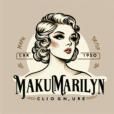enhance your look by learning how to dress for your face type,Discover Your Style Essence.
Everyone possesses unique beauty and is seen differently by others. This explains why certain styles look fabulous on some people but seem to drain us when we try them. We might question if there’s something wrong with us, but the truth is, we just need to identify our style essences.
So, what exactly is a style essence? It’s an observable blend of your inner self mirrored through your choice of apparel. It’s the fusion of your worldview, your aura, and how you project it on your exterior self. Factors like your facial features or even the way you walk or talk can influence your style essence.

The 7 Style Essences Explained
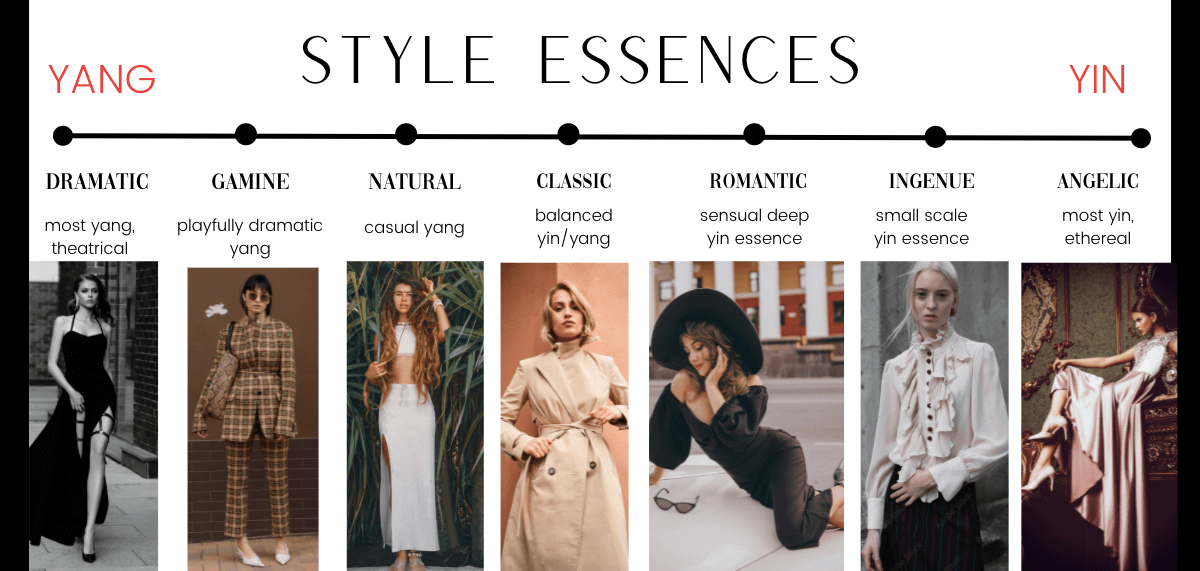
Style essences are fundamentally the balanced representation of your internal and external self, as well as your fashion lines. They aim to create a connection between your physical form and the lines of your attire. They consider your aura or “vibe” and how you present yourself to the world, but they are not simply reduced to a character trait.
Therefore, even if you’re an extremely kind-hearted individual, it doesn’t mean you can’t embody a dramatic style essence.
Where did style essences come from?
The most prolific example of style archetypes came from David Kibbe in the 1980s with his book “Metamorphosis”. They included 5 main families:
- Dramatic
- Natural
- Classic
- Gamine
- Romantic
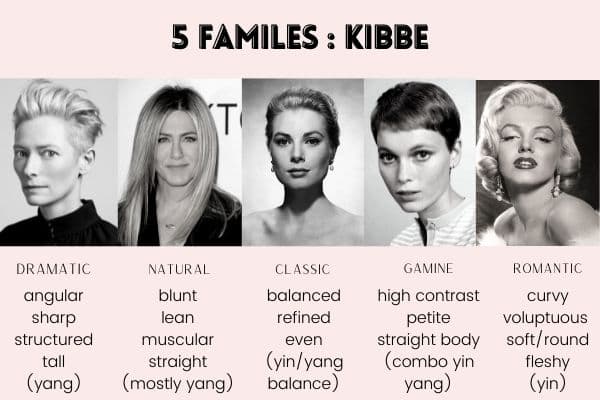
The highly acclaimed Kibbe System comprises of 10 distinct IDs that fall under five primary style families.
However, Kibbe was not the pioneer in exploring the idea of integrating your body’s most genuine attributes and shapes, and aligning them with your clothing choices.
This overarching concept was first proposed by Belle Northrop in 1936 in her article, “Approach to the Problem of Costume and Personality”. She suggested that “all aspects of personality and every detail of appearance, woven into an integrated whole, must be taken into account” and that some of these traits are more “felt” than they are easily articulated. She further introduced new terminology to describe these balance shifts using the terms “yin” and “yang”.
Her idea was somewhat more abstract, and it wasn’t until Harriet McJImsey presented archetypes to correspond with the yin/yang balance of each person that these style systems really began to take form.
In her book, McJimsey expanded on the concept of yin/yang balance and began to assign different physical characteristics to each, applicable to six primary archetypes: Dramatic, Athletic, Classic, Romantic, Gamine, and Ingenue. McJimsey proposed that one could embody a combination of these types.
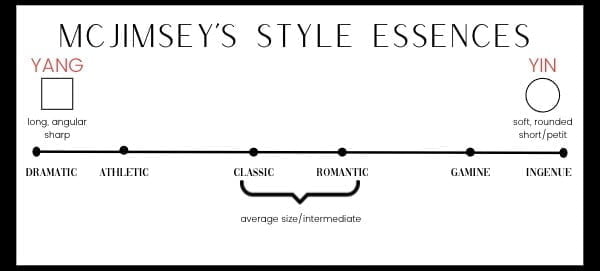
Kitchener’s style essences, which were initially created by Joan Songer, evolved from McJimsey’s work and included a significant 7th essence known as The Angelic or The Ethereal.
Both Kitchener and Kibbe were developing these systems during the late 1980s. David Kibbe authored his book Metamorphosis in 1987, while Kitchener was working with Personal Style Consultants, originally established by Joan Songer.
Kibbe believed that ingenue had no relevance in a system intended for adults, so he removed it and developed his own variations of the style archetypes defined by McJimsey. He also adjusted the positions of romantics and gamines on the yin/yang spectrum. However, it can be argued that Kibbe’s Soft Gamine ID has some similarities to the ingenue essence.
Observing the evolution of fashion lines like Romeo Gigli and style icons such as Darryl Hannah, Kitchener introduced the crucial style essence of “angelic”. This addition, along with his insistence on retaining “ingenue” as a part, ultimately made the identity system more comprehensive
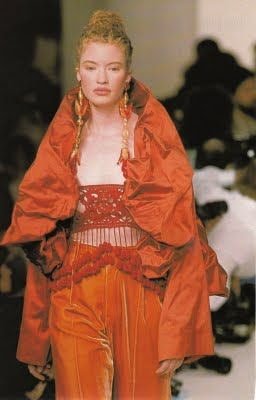
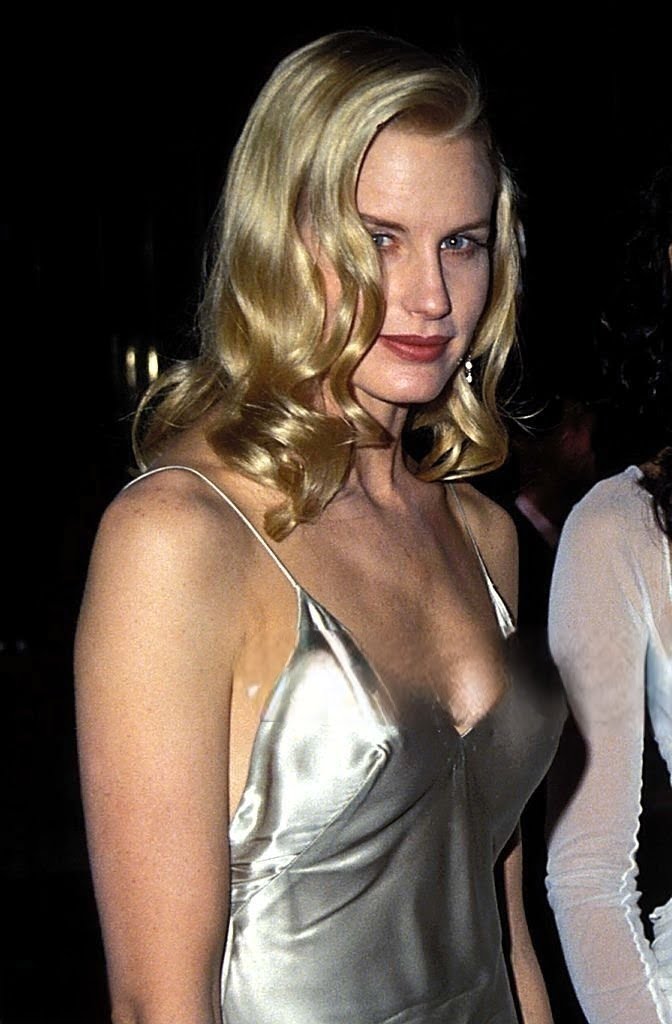
Quick Recap on Yin/Yang


Originally rooted in Daoist principles, the concepts of yin and yang were used to explain how “seemingly opposing or contrasting forces might in fact be complementary, interconnected, and interdependent in nature, and how they may give rise to each other as they interact with each other” .
These concepts have since been adopted by the western world and, in the context of body typing and harmonizing style lines, represent two distinct notions.
Yang is characterized as sharp, angular, straight, and long, while Yin is depicted as soft, rounded, gentle, and short.
While other descriptors could be applied to these terms, it’s best to keep the descriptions straightforward to avoid adding confusion or bias.
It’s crucial to dispel the common but inaccurate notion that yang is “masculine” and yin is “feminine”. This misinterpretation only further skews perceptions of the IDs and essences. This oversimplification is likely why everyone tends to categorize themselves as a romantic or theatrical romantic.
What’s the significance of style essences? They serve as an excellent compass, directing you towards a well-rounded image. Understanding your essence offers insights into how others perceive you and how to project your most genuine, captivating, and attractive self.
Style essences can be instrumental in navigating your personal style and the aura you emanate.
The Kibbe system incorporates style essences too, but they are essentially “pre-determined” through your unique Kibbe ID. For example, a Flamboyant Natural would predominantly possess a natural essence with a subtle dramatic essence.
Kibbe’s goal was to help YOU shine by simplifying the trend-centric culture, identifying your distinctive beauty, and embracing those traits.
Although it operates differently, John Kitchener’s system also utilizes a yin/yang approach to determine your blend of style essences. He places significant emphasis on color contrast, and technically, you could be a mix of all seven essences (though this is considered uncommon).
In our contemporary culture, fast fashion and trend-chasing are rampant. While I appreciate trends, I believe many people approach their personal style incorrectly. They acquire items, try them on, but often don’t like them enough to make them a permanent part of their wardrobe. Consequently, this cycle repeats every few months.
This behavior is facilitated by the inexpensive and readily available fast-fashion industry.
I’m not criticizing those who buy fast fashion (I’ve done it too!), but it’s important to note that this practice might hinder the development of your personal style. It’s akin to perpetually running on a treadmill without improving your stamina.
This is where the insights from Kibbe and Kitchener can prove invaluable.
Style Essences: Kibbe versus Kitchener Exploration
Some individuals may feel restricted by Kibbe’s system, but that is not its fundamental intention. Rather, it aims to accentuate your genuine self and enable you to embrace the person you’ve always aspired to be.
The sensation of being “boxed in,” I believe, is primarily attributable to an excessive focus on the original text style lines, which may not align with Kibbe’s current perspective. Nowadays, he emphasizes that clothes don’t have an ID and that any ID can wear any garment. It’s about creating a “complete look” that harmonizes with your body ID.
However, it’s important to remember that no system is “flawless”. Some people might find Kitchener’s approach more instinctive, while others may prefer Kibbe’s methodology. Both systems employ the yin/yang concept but interpret these qualities through distinct perspectives and characteristics. Let’s delve into some of these differences.

In the Kibbe system, both Beyonce and Marilyn Monroe have been confirmed as Romantics. According to Kitchener, Marilyn Monroe has an equal romantic/ingenue essence. While Beyonce hasn’t been officially evaluated by Kitchener (so this is just my interpretation!), I believe she possesses a blend of Dramatic/Romantic essence. There’s a noticeable intensity in Beyonce’s facial features, enabling her to carry off bolder looks compared to Marilyn Monroe.
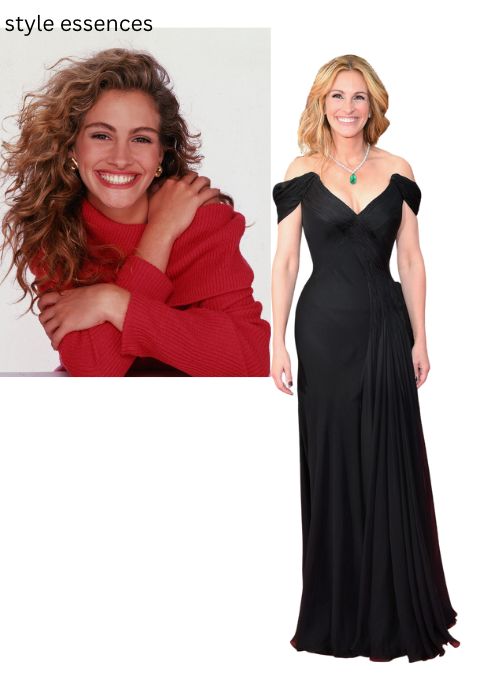
Another example would be Julia Roberts. She has been verified by Kibbe as Flamboyant Natural, and in Kitchener’s system as having a Romantic/Natural essence.
How do I find my essence?
While essences do provide a general framework for comparison, the fact that you’re a blend means the rules are less rigid and not every trait may align with all characteristics. For instance, Kibbe classifies Nicole Kidman as Flamboyant Natural due to her height and breadth, while Kitchener identifies her as a Classic with Ingenue.
So, while physical attributes certainly matter, their interpretation can vary based on your unique blend.
Here’s an illustration of Physical yin/yang:
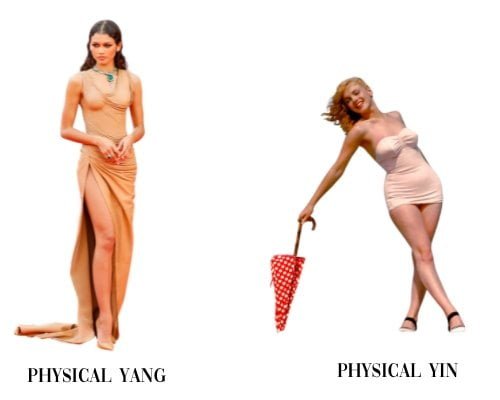
Zendaya is long, angular, and basically all yang as an unverified pure Dramatic ( some believe she is Flamboyant Natural- but either way yang leaning). Whereas Marilyn Monroe physically is pure yin as a Romantic.
Here’s an example of Essence yin/yang:

The essence yang is sharper, cooler, and a bit more unapproachable. The essence yin is warm, friendly, and inviting.
The 7 Style Essences

Kitchener himself likes to view the yin/yang system as a circle instead of a linear method, which you can see here:

youtful= ingenue, high spirited= gamine
Dramatic Style Essence
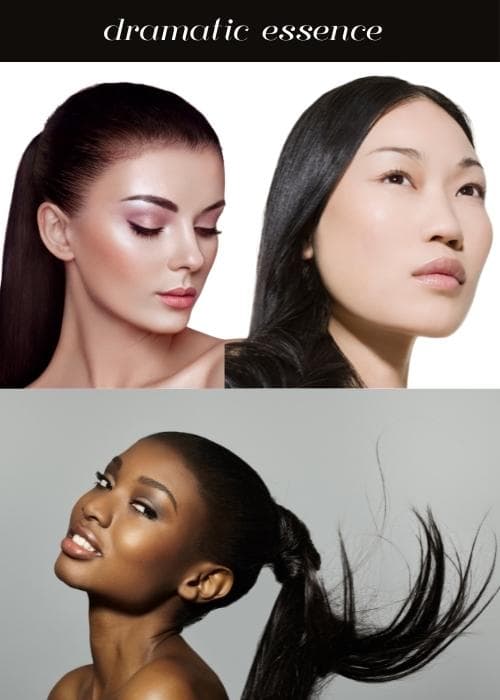
The Dramatic Essence is characterized as the most yang-dominant and theatrical essence.
Key traits include angular features (though not always), an intense demeanor, an outgoing personality, and a passion for fashion. They are typically unafraid to experiment with bold, new styles.
Cher serves as an excellent embodiment of a dramatic essence. Her audacious presence, combined with her extravagant fashion choices, are always carried off with supreme confidence.

A Dramatic essence thrives with audacious patterns, asymmetrical designs, animal prints, and clothing that extends away from the body. They can effortlessly carry off bold textures, like the rhinestone mesh worn by Cher in the aforementioned example. Additionally, they excel in wearing structured menswear.


Gamine Style Essence
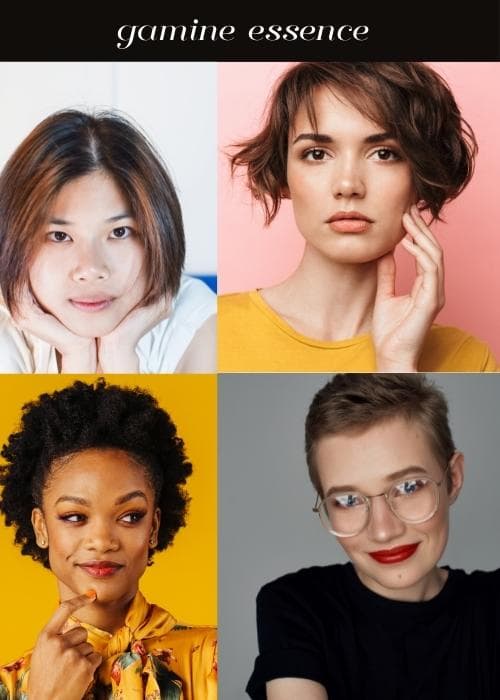
In the Kitchener system, gamines are labeled as Playfully Dramatic with a Yang Essence, a slight deviation from Kibbe’s characterization of Gamines as a blend of yin/yang.
They are typified as “lively” with a sprite-like charm.
Both Kitchener and Kibbe identify Liza Minelli as a quintessential gamine. Their physical traits are similarly described, portraying the gamine as petite with compact bodies, enchanting eyes, and a somewhat “tomboyish” appearance.
They tend to radiate an energetic, playful aura. Fashion experimentation comes naturally to them, whether it’s adopting trends or playing with different looks.
When it comes to style, they often favor bold colors, mix-and-match patterns, elements of menswear, and quirky accessories.
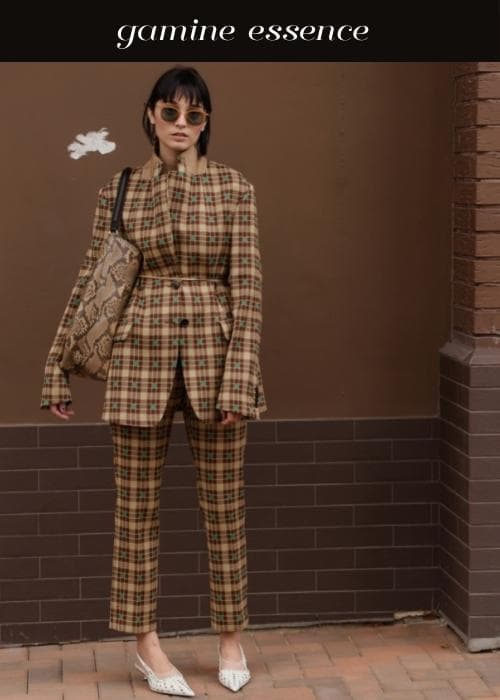

Natural Style Essence
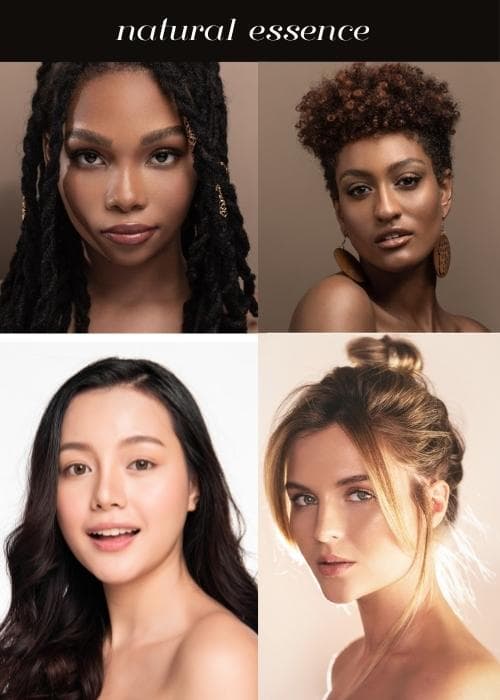
The Natural Essence is characterized as the relaxed yang essence.
This essence often embodies a laid-back, athletic appearance.
Physically, they tend to have broader features and a pronounced shoulder line. Kitchener portrays them as less fashion-focused, often prioritizing functionality and comfort over style.
However, this could be an oversimplification of the natural essence. Yes, at one point, natural style lines were solely functional. But, in the 70s, the fashion industry embraced these “style lines,” transforming them into the effortless, easy-going, and “natural” look we know today.
So, while some individuals with a natural essence may lean towards practical pieces and uncomplicated layering in their styles, I believe this does not fully encapsulate the modern interpretation of the natural essence.
Today, it likely also incorporates natural textures, fibers, abstract forms, free-flowing hair, and a general nod to Mother Nature.

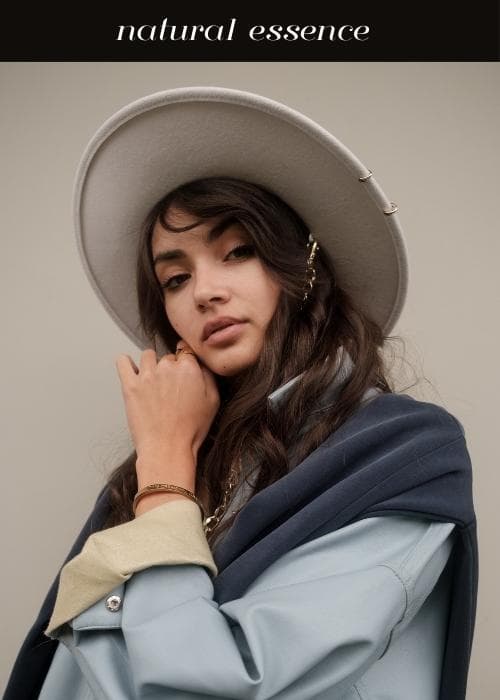
Here, we can observe a blend of natural and classic essences. While some of the attire she dons exhibits more structured lines and traditional styling methods, her accessories, hairstyle, and overall demeanor unmistakably exude a natural essence.
Classic Style Essence
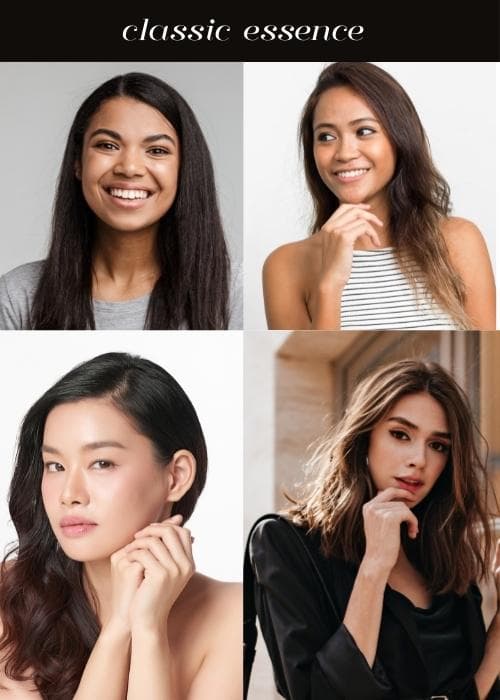
The Classic Essence represents a harmonious blend of yin and yang.
They emit an aura of elegance, often featuring symmetrical facial features and embodying a timeless style. Occasionally, their style may lean towards the conservative side.
Kitchener cites Nicole Kidman as a notable figure with a classic essence, whereas Kibbe classifies her as a Flamboyant Natural. This underscores the significance of considering your essence.
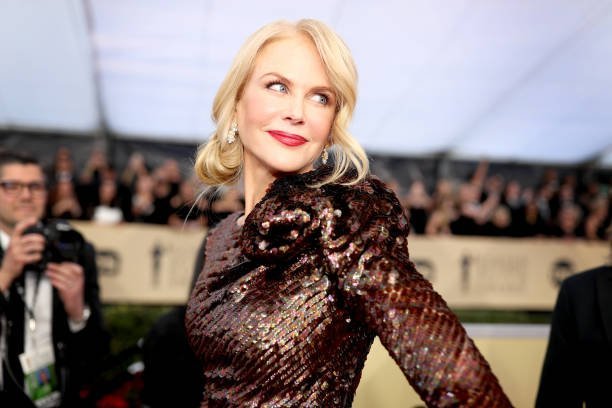
Physically, Nicole Kidman perfectly fits the Flamboyant Natural archetype with her height, breadth, and robust yang characteristics. However, her overall aesthetic leans more towards being refined and enduring rather than loose and free-flowing. While we do see her occasionally choosing flowing dresses or casual hairstyles, her predominant style influence is rooted in classicism.
Those with a Classic essence gravitate towards enduring pieces with subtle structure and form. They prefer items that are moderate, balanced, and present a well-coordinated look.
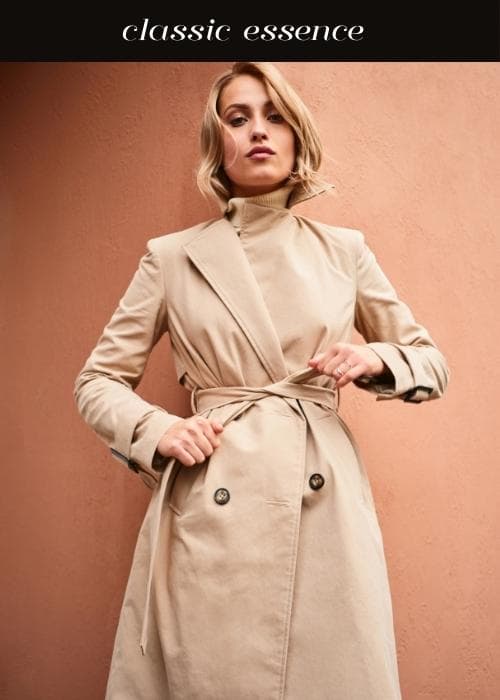
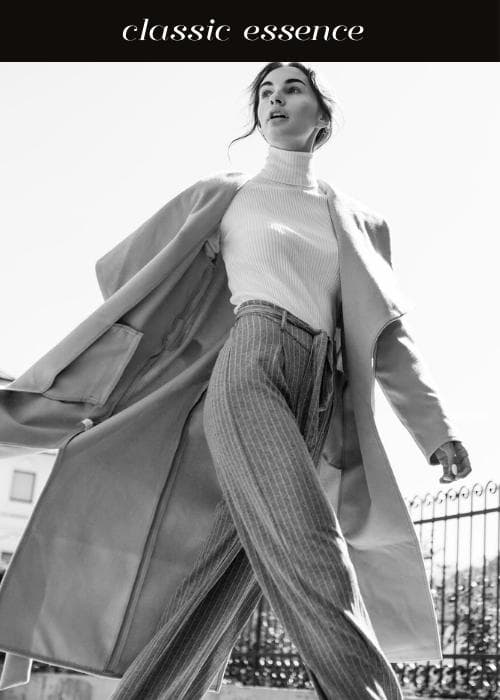
Romantic Style Essence
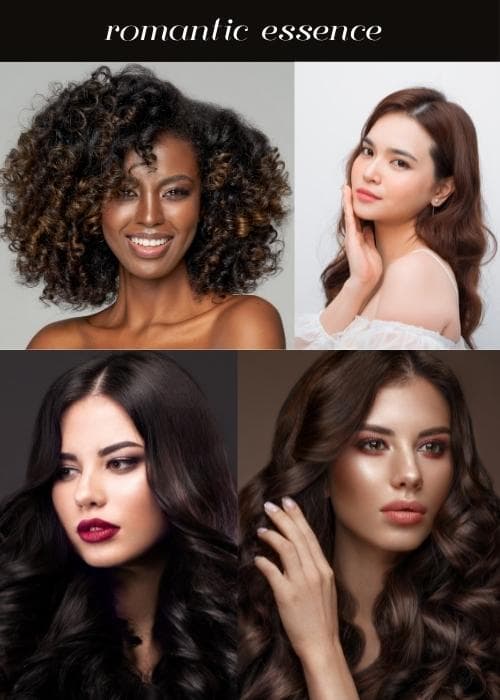
The Romantic Essence carries a profound, sensual yin quality.
This is another instance where Kitchener’s essence theory diverges from Kibbe’s. Kitchener identifies Julia Roberts as an exemplar of the romantic essence, while Kibbe categorizes her as a Flamboyant Natural.
Although Julia Roberts indeed embodies some natural essence and aligns well with the Flamboyant Natural description, we cannot overlook her romantic essence and how beautifully she carries romantic influences in her appearance.
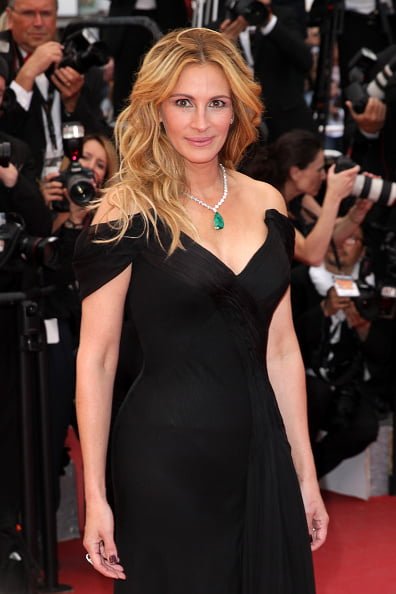
I find this pairing resonates with me because, although I am a Flamboyant Natural, I possess about 30% of the romantic essence. This enables me to adopt slightly more elaborate details, textures, and even some romantic style lines. One reader pointed out that Flamboyant Naturals can easily sport slip dresses, but this doesn’t necessarily indicate a romantic essence. However, FNs typically opt for longer, looser slip dresses with significantly fewer delicate details. The slip dress illustrated below is designed to accentuate curves – it cinches at the waist, hugs the hips, features dainty straps, and has bust cups adorned with lace. All these elements make the dress lean more towards a Romantic or Ingenue Essence than a traditional Kibbe FN slip dress.
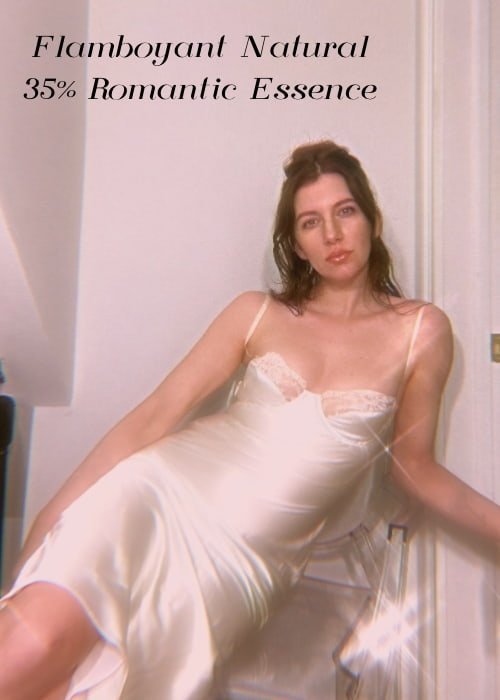
I still am yang leaning, even though I have some romantic essence in my blend
The Romantic Essence is all about indulgent fashion, and expensive-looking accessories. They look fantastic in luxurious silk textures and fabrics that hug the body.
Physically they can have curvaceous figures and alluring eyes.
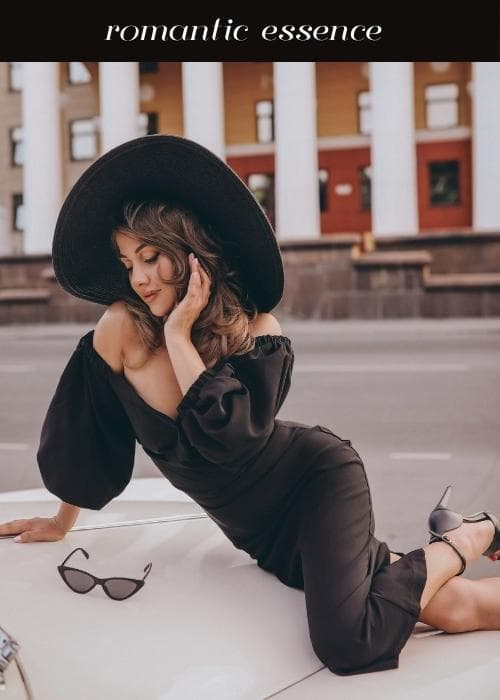

Youthful/Ingenue Style Essence
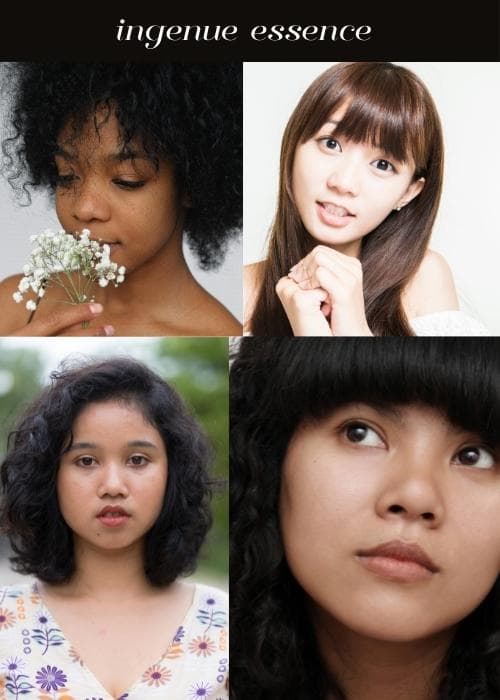
The Ingenue Essence is a small-scale yin essence.
Prime celebrity examples include Emma Stone and Marilyn Monroe (she also has romantic essence).
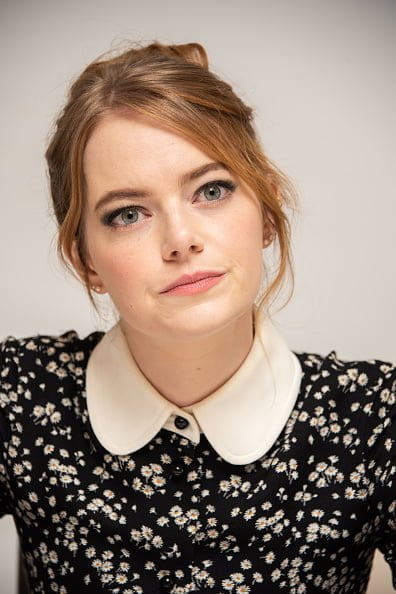
The Ingenue essence embodies a youthful demeanor. They are frequently characterized by their delicate, rounded physical features and wide-set eyes.
Their fashion choices often incorporate ornate florals, frills, ruffles, and pieces inspired by vintage trends. Their wardrobe may also include small-scale floral prints, puff sleeves, lace bows, and other diminutive or youthful elements that enhance their overall appearance.
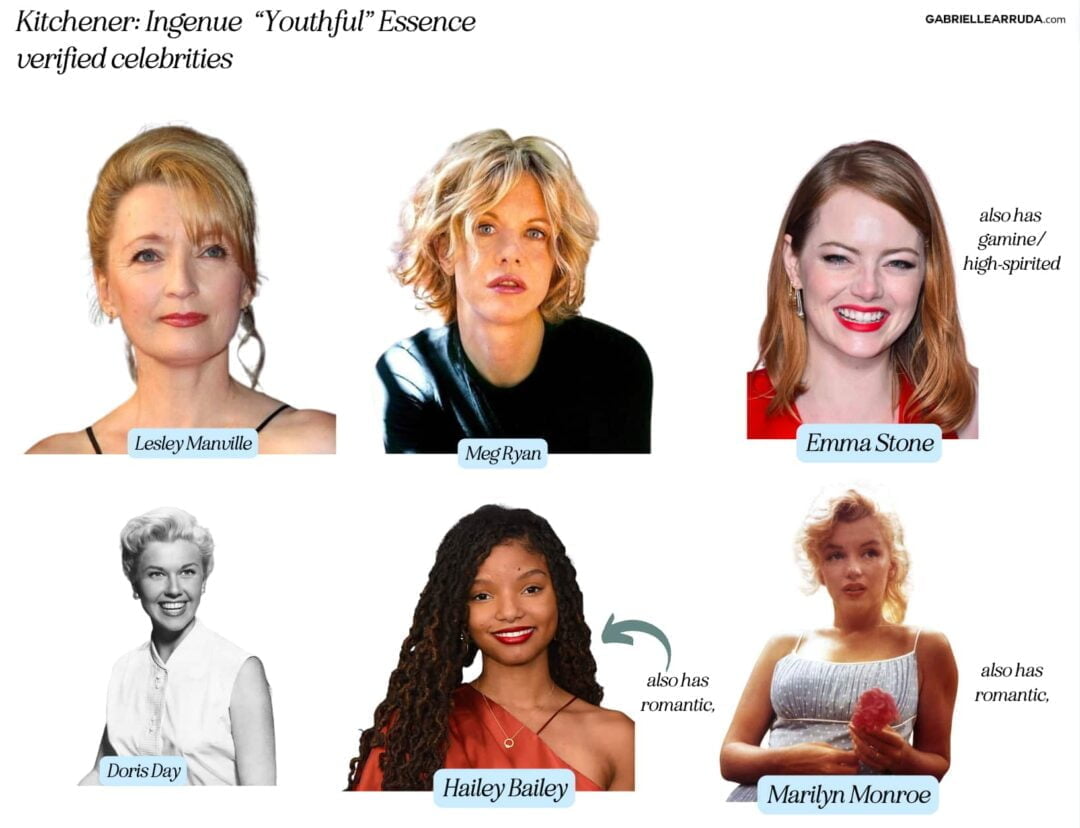

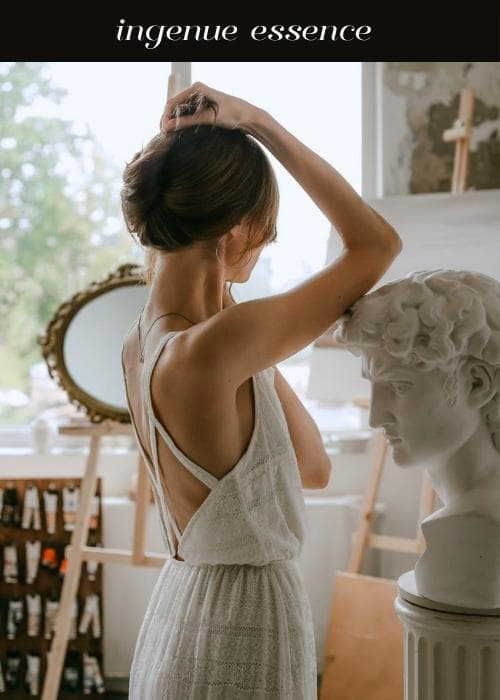
Angelic Style Essence


The Angelic Essence, per Kitchener’s description, stands as the most yin and otherworldly essence.
Known also as the ethereal essence, individuals with this characteristic can often exhibit a softer physical appearance, although this is not always the case. They might seem as if they hail from a bygone era. Their stature can be tall and waif-like, and they may possess an oval-shaped face on occasion.
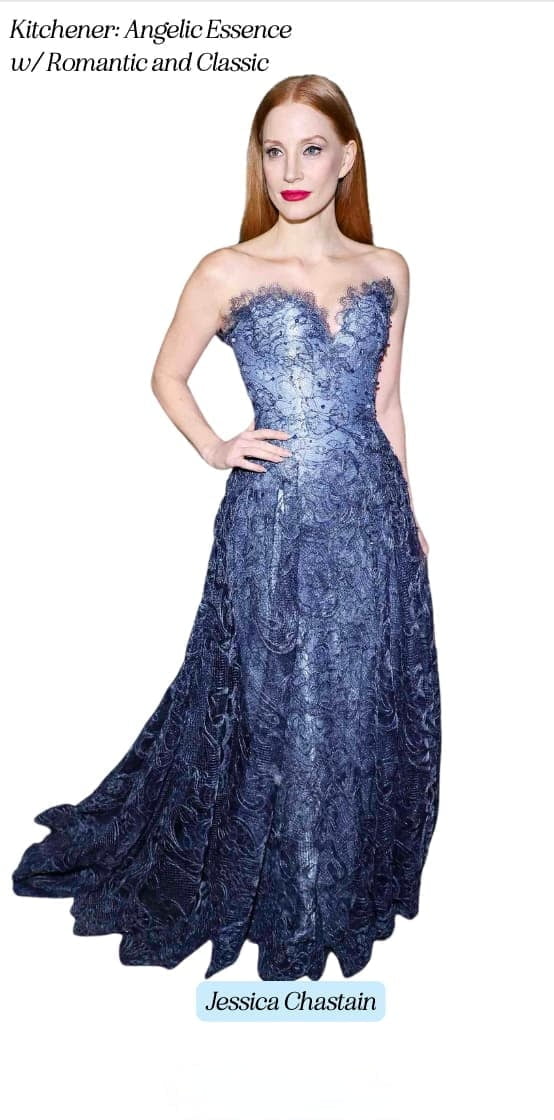
Their presence seems to exude an almost enchanting quality, akin to that of a fairy, mermaid,
People with ethereal essences wear a lot of fine textures and draped pieces that almost look like they are floating or have movement. Web-shaped designs, sumptuous textures, and ornate details are common.
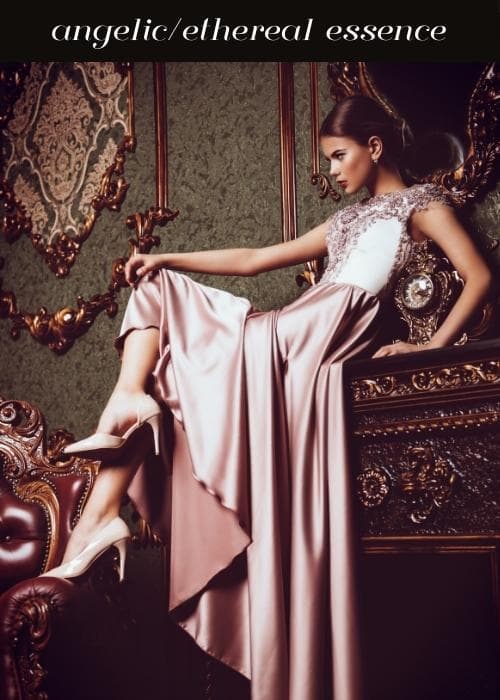
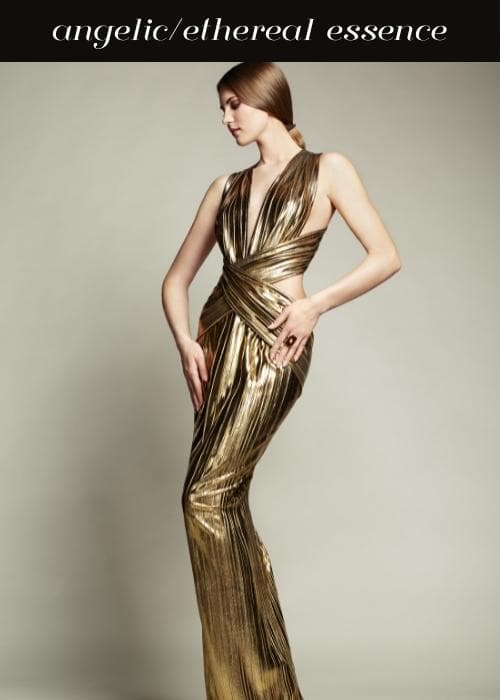
This essence often presents a challenge to both identify and incorporate into daily fashion. If you sense that you possess an ethereal essence, initiate the integration process by adding subtle ethereal elements to your outfits, such as choosing luxurious fabrics and incorporating draping techniques.
The chart provided below takes into account both Kitchener’s and McJismey’s perspectives, covering the physical and behavioral aspects of each essence. It also includes a reference to a book that Kitchener advocates for, called “Shopping for the Real You”.
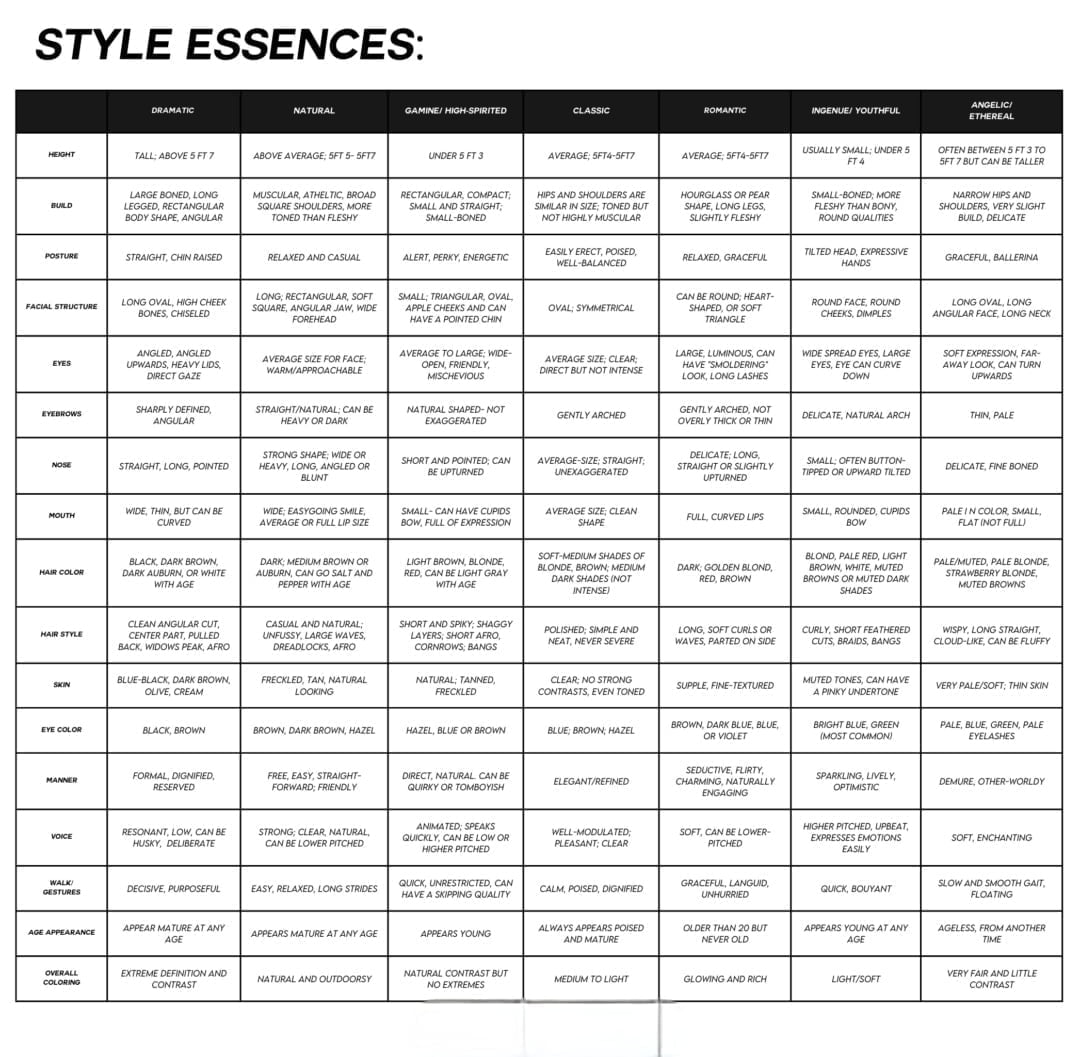
Consider the elements from the chart above as a basic framework, particularly regarding hair color, skin, and eye color. While color plays a vital role in Kitchener’s essence system, any combination of skin, hair, and color can represent any essence. It’s more about your overall contrast level and the other elements that make up your blend. So, while color could be a starting point, it’s important to also focus on all other traits and your level of contrast.
Unlocking Elegance: The Secrets to Classic Style
FAQs About “Discover Your Style: How to Dress for Your Face Type”
How to dress according to your face shape?
Dressing according to your face shape involves selecting clothing styles, necklines, and accessories that enhance your natural features. For example:
- Oval Faces: Almost any style suits this balanced shape. Experiment with different necklines and avoid styles that overly elongate the face.
- Oblong & Rectangular Faces: Wider necklines like scoop or round shapes help balance out the length of the face.
- Square Faces: Softer, rounded necklines and clothing styles with more flow complement the angular features.
- Heart-Shaped Faces: V-necklines can accentuate a narrower jawline, while wider styles can create visual balance.
How do I know my face style?
To determine your face style, follow these steps:
- Measure Your Face: Use your fingers to measure the width and length of your face, noting the proportions.
- Analyze Your Features: Look at key features such as your jawline, forehead, and cheekbones. This will help you identify your face shape (oval, round, square, heart, etc.).
- Consult a Guide: Refer to detailed guides or online tools to match your measurements and features to a specific face shape.
How do I find my dressing style?
Finding your dressing style involves understanding what makes you feel comfortable and confident. Here’s how you can start:
- Experiment: Try different cuts, colors, and styles to see what complements your body and face shape best.
- Inspiration: Look for style inspiration from celebrities, fashion blogs, and social media who share a similar face shape and body type.
- Feedback: Take note of compliments and how you feel in various outfits. This feedback helps you refine your style preferences.
Which is my face shape test?
To identify your face shape, you can take an online face shape test or follow these steps:
- Take a Photo: Take a straight-on photo of yourself with your hair pulled back.
- Mark Key Points: Print the photo and place dots at the top of your forehead, the widest part of your cheekbones, the jawline, and the bottom of your chin.
- Connect the Dots: Draw lines connecting these points to see the outline of your face. Compare it to common face shapes (oval, round, square, heart) to identify your own.
How Discover your style how to dress for your face type quiz?
Quizzes available online can help you discover your style and how to dress for your face type. These quizzes typically ask questions about your facial features, personal preferences, and lifestyle to provide tailored advice on fashion and styling.
Discover your style how to dress for your face type female?
For women looking to discover their style based on their face type, focus on:
- Necklines: Choose necklines that enhance your face shape. For example, round necklines for oblong faces or V-necks for heart-shaped faces.
- Haircuts: Select hairstyles that balance your features. For instance, long layers for square faces or soft waves for round faces.
- Accessories: Opt for earrings, necklaces, and other accessories that draw attention to your best features without overwhelming your face.
What does “classic essence face” mean?
A “classic essence face” refers to facial features that embody timeless beauty and balance. Individuals with a classic essence face typically have symmetrical and harmonious proportions, giving them an elegant and sophisticated appearance. This face type can easily adapt to various styles while maintaining a refined look.
How can I determine if I have a classic essence face?
To determine if you have a classic essence face, look for key features such as balanced proportions, symmetry, and well-defined contours. Classic essence faces often have a smooth, oval or rectangular shape without extreme angles or softness. Consulting with a stylist or using online tools can also help you identify your face type.
What are the best clothing styles for a classic essence face?
For those with a classic essence face, clothing styles that emphasize elegance and simplicity work best. Opt for tailored, structured pieces such as blazers, pencil skirts, and classic dresses. Neutral colors, clean lines, and minimalistic designs enhance the timeless beauty of a classic essence face.
How should I accessorize if I have a classic essence face?
When accessorizing a classic essence face, choose pieces that complement your elegant and balanced features. Simple, refined jewelry such as pearl earrings, delicate necklaces, and classic watches can enhance your overall look. Avoid overly bold or flashy accessories that may overpower your natural elegance.
What hairstyles suit a classic essence face?
Hairstyles that highlight the symmetry and balanced proportions of a classic essence face are ideal. Consider sleek, polished looks such as bobs, mid-length cuts, and soft waves. Classic updos and neatly styled hair can also complement the timeless appeal of a classic essence face.
Can makeup enhance a classic essence face?
Yes, makeup can enhance a classic essence face by emphasizing its natural balance and harmony. Stick to neutral tones and classic makeup techniques such as subtle contouring, defined brows, and a polished lip color. The goal is to enhance your features without overwhelming them.
What should I avoid when dressing for a classic essence face?
Avoid clothing and accessories that are overly trendy, avant-garde, or excessively adorned. These styles can clash with the refined and timeless nature of a classic essence face. Instead, focus on pieces that exude sophistication and understated elegance.
How can I update my wardrobe to suit my classic essence face?
To update your wardrobe for a classic essence face, start by investing in high-quality, timeless pieces that can be mixed and matched. Look for items such as tailored blazers, classic trench coats, simple blouses, and well-fitted trousers. These staples will form the foundation of a versatile, elegant wardrobe.
Are there any celebrities with a classic essence face that I can take inspiration from?
Yes, several celebrities are known for their classic essence faces. Icons like Audrey Hepburn, Grace Kelly, and Kate Middleton exemplify timeless beauty and elegance. Studying their fashion choices and style can provide inspiration for dressing your classic essence face.
